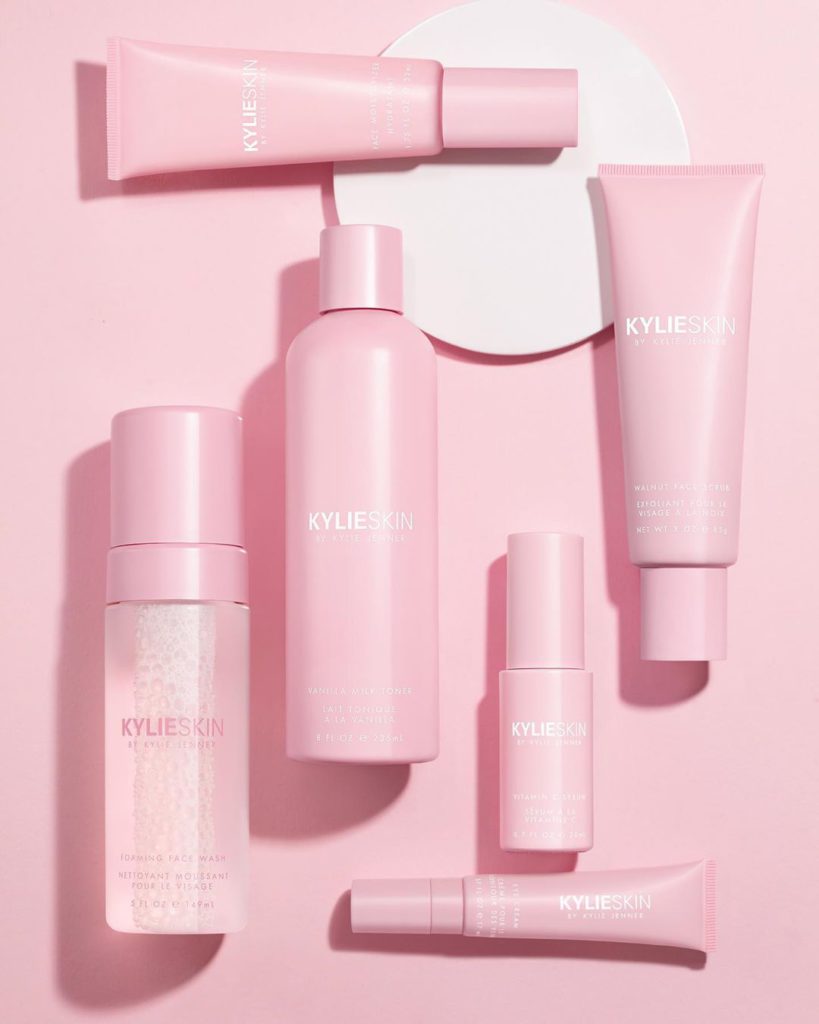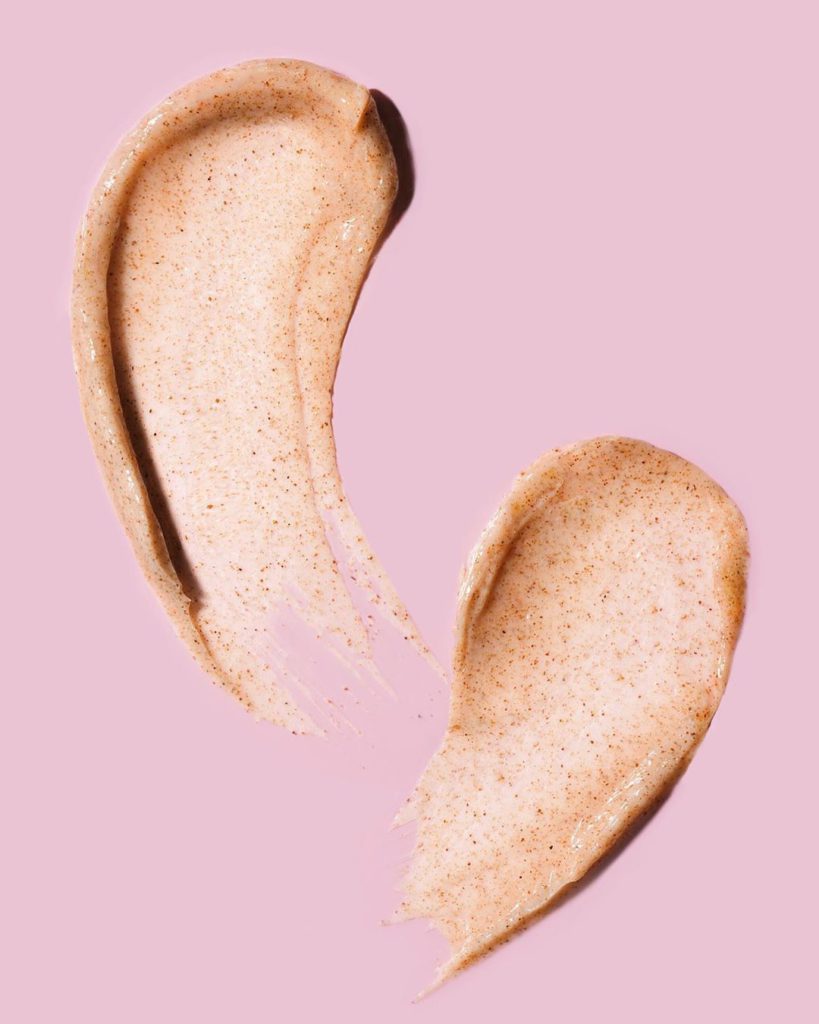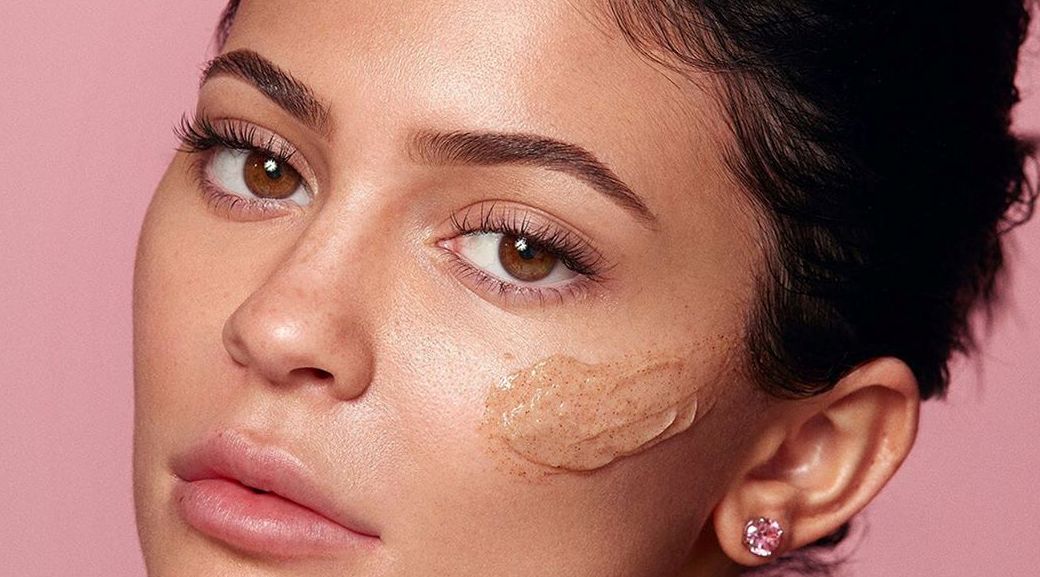By Amanda Foxon-Hill
It was hard not to be affected by the keyboard warrior backlash Kylie Jenner got recently after announcing that her new skincare line, Kylie Skin, would include a walnut facial scrub. Being a 90s teen turned cosmetic chemist I didn’t think too much of this at first. I came of age in an era when scrubbing your face with walnuts was novel and fun. St. Ives’ Aapri face scrub was fast becoming a staple in every bathroom cupboard and the saying ‘the harder the better’ was our mantra! But it looks like all this may have changed. It didn’t take too much reading to realise that these days, admitting to enjoying a harsh scrub is something to keep hush about as apparently there is nothing worse!
As a cosmetic chemist I’m often asked to incorporate natural scrub particles into cosmetic products. As such, I wanted to dissect this backlash a little and find out if there is any truth to the idea that walnuts will ruin your skin. First up, I turned my attention to two words that kept coming up again and again and they were ‘micro tears’.
Micro tears are tiny abrasions that can occur on your skin and cause it stress by disrupting barrier functioning and causing irritation. While this sounds pretty horrendous it’s important to note that our skin has many features that help it to ride out any rough life events, it would be pretty painful if our skin ripped at any sign of friction! I struggled to find much scientific data on exfoliant-generated micro tears which doesn’t mean they don’t happen, but it did make me wonder if this has all been a little over-egged.
The elastin in our skin is, as its name would suggest, elastic and as such, can absorb and flex with most stress that’s applied to it. This elasticity is a key feature at the core of our skin, rather like the springs in a mattress. So, while we don’t scrub our elastin (as that’s buried in our deeper dermal layers) we do make use of its ‘go-with-the-flow’ qualities. But that’s not the only way our skin resists tearing.
Our epidermis consists of many layers of which the outer ones are dead. These dead cells are called corneocytes and they act like our armour or first line of defence. It’s these dead cells that I, as a cosmetic chemist, target with my scrub formulations. I want to dislodge them just enough that the very old, oxidized and dull layers are removed but the lower, still glued-on layers remain. In my experience it’s been more likely that acid based exfoliant formulations go too deep, too fast and cause burning than physical exfoliants. Most people stop way short of exfoliating their skin clean off, a sure sign of which would be weeping, redness and pain such as what you’d feel with a carpet burn.

Is it likely that exfoliants such as walnut do any damage?
Walnut particles are abrasive because they are hard and unyielding (not squishy like a sponge). They have some jagged edges and vary in size from tiny crumb like particles to larger chunks. It’s likely that there is some variation between suppliers in particle size distribution with more expensive grades having a smaller range of particle shapes and sizes due to a more controlled milling. Particle size is important for the formulator to appreciate. The finer the particles, the larger the surface area of scrub in the finished formulation. Large surface areas of natural materials can mean a larger micro risk and that could lead to problems. All physical exfoliant particles contribute, what we call, a bio burden in a formula. That is, they bring with them micro spores, usually fungi from the air. If walnut scrubs are bad for the skin, it could be less about micro tears and more to do with microbes. The risk of micro contaminated cosmetics is well documented and includes infection, inflammation and generalised irritation. Again, as a cosmetic chemist it’s my job to select an appropriate micro strategy to prevent any issues from my ingredients. Sure one strategy may be to avoid walnut exfoliant particles but that would be a little lazy and, if the customer wants a walnut scrub, that’s what they should get – you quickly learn in this job that avoiding problems by avoiding certain ingredients is a game that you can only play for so long.
It’s not just the particle size, hardness or abundance that matters with a scrub. The product’s pH, the creaminess of the base, abundance of scrub particles, use instructions, product price and even pack design all play a part.
I talked the issue of walnut scrubs over with my friend, professional facialist Amy Erbacher, because, while I do put a lot of time into understanding the skin and formulations to support it, it’s the facialists that see the results of what my products do to the skin and how the public interact with them.
Amy regularly sees the results of over zealous exfoliation in her clinic, the most common being over sensitive skin, redness and irritation. She feels strongly that most skin types don’t need the harsh exfoliation that you achieve with a walnut particle and that if people do want to use them they should go easy, use them less often (no more than once a week) and not at all if they have active pimples. I can understand those concerns but also know that brand owners are keen to see fast results and produce products with textures that feel like they will work. For people of my age that still means an appetite for rough scrubs.
So, what do we do?

For me, sitting here in the lab I know I can do my bit to help the walnut scrub addicts get their fix with minimal risk. I can select good quality scrub particles that have been milled specifically for cosmetic use. I can create a cushioned formula for them to sit on, one with some emolliency and a rheology (or flow) that yields with minimal force. This would encourage clients to press gently rather than grind down their skin. I can pair the exfoliant with mild surfactants that are effective in removing makeup but that don’t take away the skin’s natural oils or disrupt its micro balance. This will give the client the feeling of a deep clean without resorting to harsh measures or product over-use. Lastly, I can support all of that with a good micro strategy that helps keep my formula clean in spite of the walnut shell! The last bit of the puzzle is for the brand owner.
Brand owners should rest assured that not all walnut scrubs are created equally but that yours can be great if you present it carefully. You can direct your customers on how to use this type of scrub safely and effectively and responsibly while leaving your formulator to handle all the other stuff. We shouldn’t forget that the above conversation is mainly about the face. The skin on our bodies is generally much tougher so if you still want it rough, just direct the scrub action south a bit.
Whatever Kylie Jenner gets up to is her business but as for yours, I bid you happy and safe scrubbing with or without walnut, us chemists know how to handle it.
Amanda Foxon-Hill, Cosmetic Chemist at the innovative New Directions business, writes in esprit Magazine Australia each issue – the above article is featured in our up-coming print magazine. Out July 1st, 2019!
 Amanda Foxon-Hill – Cosmetic Chemist
Amanda Foxon-Hill – Cosmetic Chemist
Amanda’s diverse laboratory and factory experience spans a broad cross-section of the cosmetics industry from small-scale hobby manufacture all the way to 20 ton batch production. This hands-on expertise ensures that the formulation work produced by Realize Beauty on behalf of clients can be implemented on both a practical and commercially viable level.
Amanda is also a fun and vibrant presenter and has no difficulty in communicating sometimes complex scientific issues to the lay person or brand owner, thus allowing them to gain a deeper understanding of their brand or consumer product.
All images courtesy of @kylieskin

